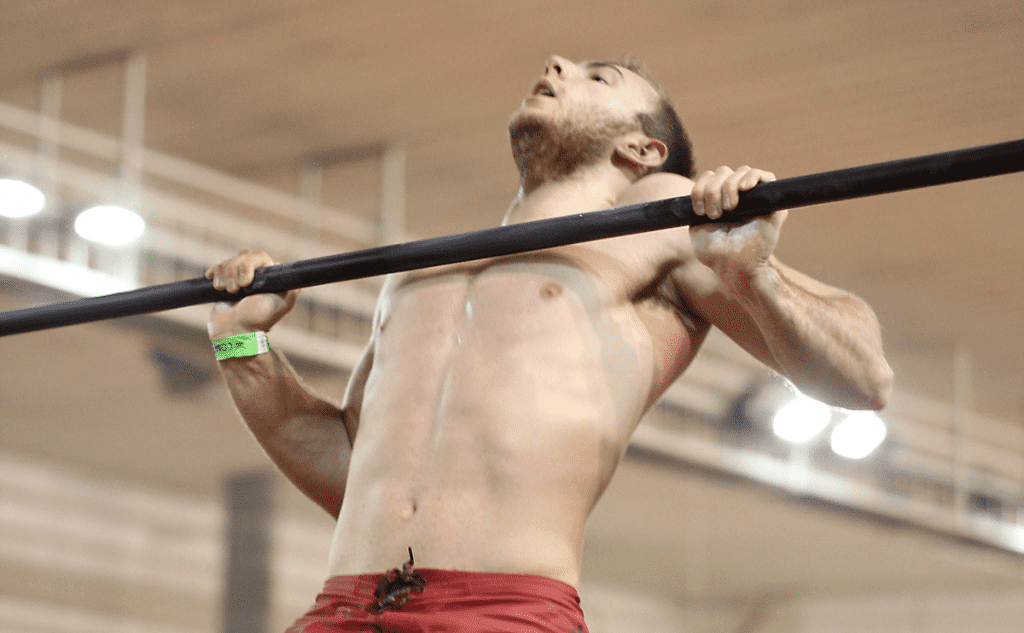As opposed to kipping pull ups, chest-to-bars have a longer range of motion, bigger height to reach and therefore a higher demand for power. Strict, kipping or butterfly, to be successful with workouts you need to master all of those.
Want to get better? Work on the following six segments.
1. Improve your strict pull-ups
The basics start with building strength. Begin with improving your strict pull ups: wide grip, chin ups, rope pull ups, weighted, etc. Improved overall strength will be your advantage and could possibly save you from injuries that can occur during fast, explosive swings and hanging movements.
If you’re a beginner, scale them with ring rows, place your feet on the box and do eccentric pull ups. More about progression comes in the last paragraph.

2. Develop and learn to control the (explosive) kip
Efficient kip is what will get you through higher volume of chest-to-bar pull ups. Start swinging your feet backwards and forward, from global extension to flexion (hollow position), while maintaining tension throughout your body.
Kipping is about coordination, controlling the movement and keeping it in a certain, efficient rhythm which creates weightless momentum when you can “pull” yourself up with using less strength than with a strict version. The power generators in this phase are the hips and the core, and the explosiveness of the kip depends on the force produced (with it). Chest-to-bars need a stronger kip, more power generated to bring your body higher.
See Carl Paoli’s video for bar kip progression.
3. Tighten the glutes and core more
Using the hips means engaging the glutes, large powerful muscles, consisting of gluteus maximus muscle (considered to be one of the strongest muscles of the human body), gluteus medius muscle, gluteus minimus muscle and tensor fasciae latae muscle. They enable us to bend and straighten the hips and produce the explosive jumping power, or in our case, the explosive “kipping” power.
Besides keeping our spine stabilized and our movement under control, core’s task is also to generate more power within the movement. Tight core will enable you to produce a higher power when kicking down and up with your legs during pull ups.
4. Move elbows behind the back
Don’t allow your neck to break (or your head to fall back at the top of the movement). As Carl Paoli says keep it in a neutral position. At the finish position elbows go behind the back (pull them all the way back) which allows chest to touch the bar.
5. Work more on your engine (and tactics)
Kipping or butterfly chest to bar pull ups come usually in a higher volume with bigger power demands (longer range of motion), incorporated in MetCons which also include some form of weightlifting. Improving your metabolic conditioning will also help you last longer: get tired later and therefore give you more control over your pacing and workout itself.
Mat Fraser recently stated that Rich Froning is simply amazing at knowing himself and how to pace throughout the movement. Observe yourself more how your react to certain MetCons and learn to pace your performance properly. Like Jason Khalipa states in the video below you don’t to peak up at the first round and shut down in the second.
6. Chest to bar Pull ups: Master the progression (for beginners)
If you’re a beginner and Chest to bar Pull ups are out of sight for while, start with some scaled version of pull ups, to build the basic strength and get some feeling for the movement. Barbell Shrugged offers a great presentation of movement that eventually lead to chest to bar pull ups.
